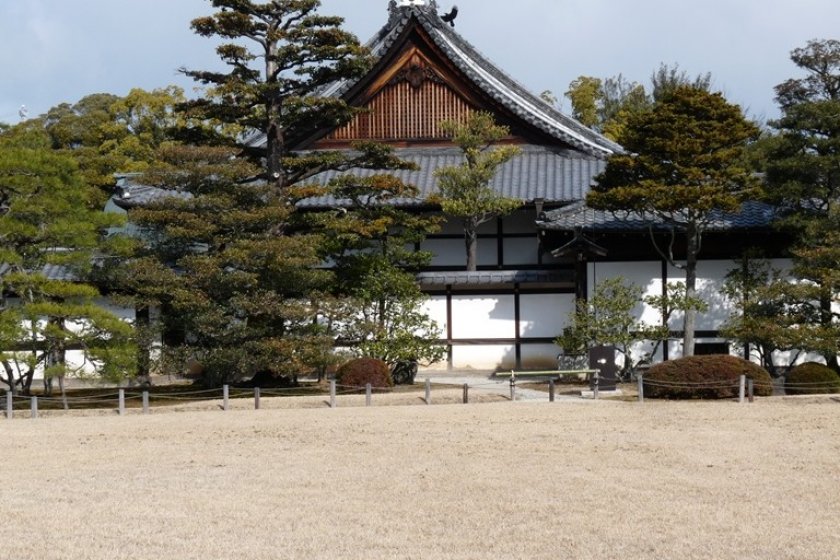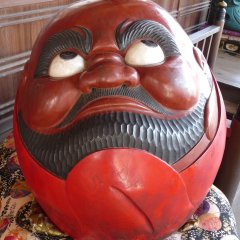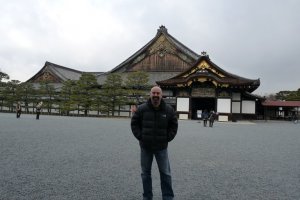Nijo Castle is surrounded by boulder walls and a moat and so I don’t get a sense of the size of the castle from the outside. The castle actually consists of two palaces. The first, Ninomaru Palace, was originally built in 1603. In 1601, the first Tokugawa Shogun, Ieyasu, ordered all the feudal lords in western Japan to fund the construction of Ninomaru Palace. The castle was completed in 1626 by the third Tokugawa Shogun, Iemitsu. Edo (Tokyo) was the capital city by this time but Kyoto was still home to the Imperial Court. Even from the entrance gate to the palace, I still don’t get a sense of the vastness of the palace. It’s not until I swap my shoes for geta (the uncomfortable wooden slippers) and walk inside do I begin to sense its majesty.
Ninomura Palace is constructed completely from wood and is single story, characterised by the simple shoin-zukuri (traditional residential) architectural style, with passageways linking thirty rooms across six buildings. The outside of the palace would have been open to the elements, although it’s now closed to protect the palace from the weather. Inside various sliding doors now made of wood, but previously made of paper, create reception rooms, offices and living quarters. The decoration is completely bare, with only tatami mats on the wooden floor (over eight hundred of them) and simple paintings on the walls. The paintings include tigers and peacocks (which are not actually native in Japan), but mostly are of plain pine trees, flowers and birds. There are over three thousand paintings in the palace. There’s very little colour at all, just the dark wood and sparse wall paintings. There was no heating for winter or means of cooling the summer heat apart from the sliding paper doors. Even now enclosed, the palace is very cold.
The Shogunate era, which lasted from 1192 to 1868, was effectively military rule. Shogun (supreme military leader) was the ultimate rank a mortal could achieve and only a daimyo (territorial lord) could possess the title. Only the Emperor, the Divine Son of Heaven, could grant the title of shogun. The Emperor of Japan is worshipped as a divinity as he is descended from an unbroken line from the Sun Goddess, Amaterasu Omikami, who was one of the children of the gods. It’s said that it was she who had painted the landscape with her siblings to create ancient Japan. The Shogun had absolute power and ruled in the Emperor’s name. As the Shogun had the Emperor’s seal and mandate, any daimyo who opposed the Shogun was in rebellion against the throne and would lose his lands and become outcast. The daimyo, the land owners of the surrounding regions, would present the Shogun with taxes and gifts from their lands. In return, the Shogun would provide protection to them.
I follow the walking route through the various reception rooms to the four ohiroma (grand rooms), where the ceremonial transactions were undertaken, and further to shinichi-shoin (living quarters). The most historical event to have taken place in the palace was in October 1867. The fifteenth Tokugawa Shogun, Yoshinobu, summoned Japan’s feudal lords to the ohiroma ichi-n-ma (first grand room) and declared that sovereignty would be restored to the Emperor. Two hundred and seventy years of Tokugawa military rule came to an end. The following year, the Emperor relocated to Edo and government was established there.





























